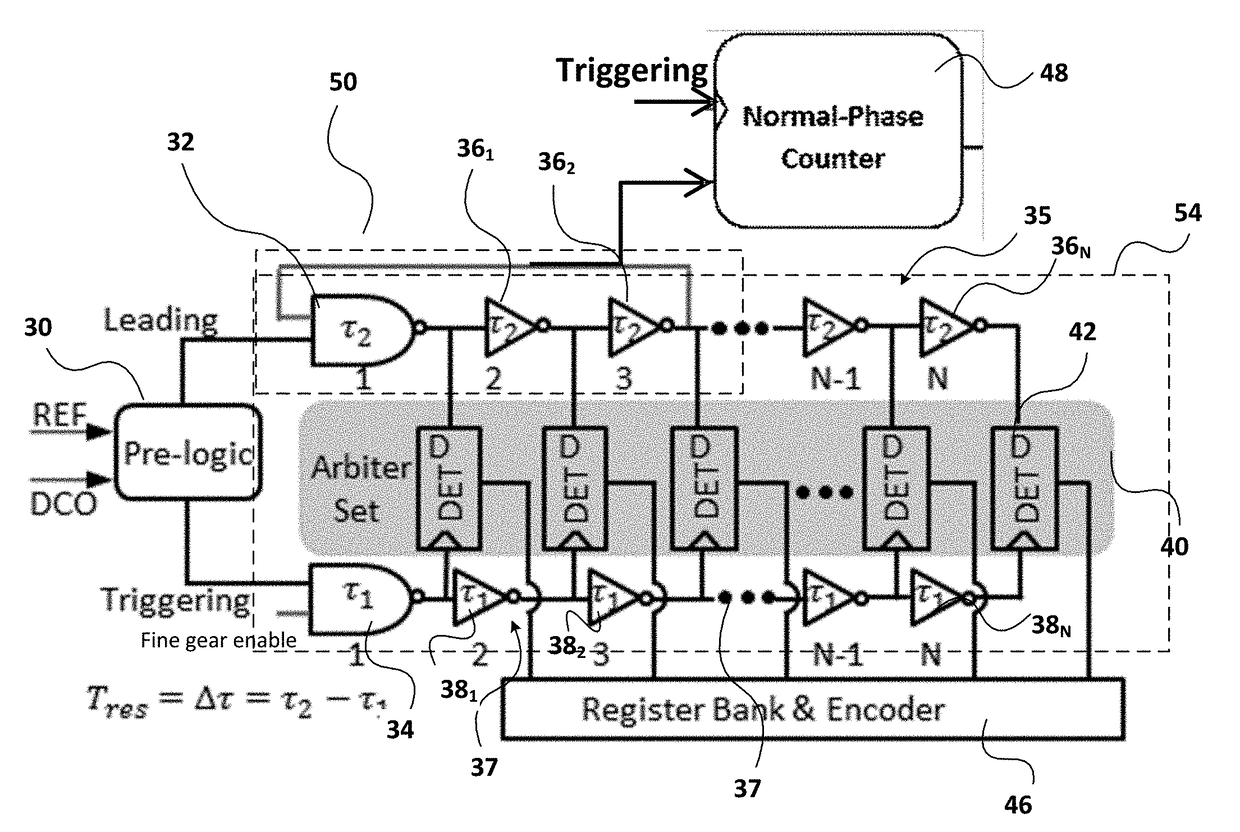Time-to-digital converter with phase-scaled course-fine resolution
a time-to-digital converter and resolution technology, applied in the field of precision time measurement, can solve the problems of cost and power perspective, difficult detection, etc., and achieve the effects of high speed, easy detection, and simplified phase measurement encoding
- Summary
- Abstract
- Description
- Claims
- Application Information
AI Technical Summary
Benefits of technology
Problems solved by technology
Method used
Image
Examples
Embodiment Construction
[0036]FIG. 5 is a schematic diagram of a typical digital phase-locked loop (DPLL). The accumulator 10 receives a frequency control word FCW as one input and a reference-retimed-by DCO input (RRD) from TDC 12, which compares the output of the DPLL with a reference source REF. The generation of the RRD signal is described below. The remaining components of the DPLL are the adder 14, divider 16, digital low pass filter 18, digitally controlled oscillator 20, accumulator 22, and flip-flop 24. The digital PLL ideally requires the TDC 12 to perform over a wide phase (time) detection range, have a fine resolution, have a low power consumption while occupying a compact chip area, and allow for a high reference frequency REF.
[0037]FIG. 6 illustrates the principles of a phase-scaled Vernier TDC in accordance with a basic embodiment of the invention. This embodiment employs a partial-ring in a slow delay chain 35. A pre-logic input module 30 receives as inputs a digitized reference signal REF ...
PUM
 Login to View More
Login to View More Abstract
Description
Claims
Application Information
 Login to View More
Login to View More - R&D
- Intellectual Property
- Life Sciences
- Materials
- Tech Scout
- Unparalleled Data Quality
- Higher Quality Content
- 60% Fewer Hallucinations
Browse by: Latest US Patents, China's latest patents, Technical Efficacy Thesaurus, Application Domain, Technology Topic, Popular Technical Reports.
© 2025 PatSnap. All rights reserved.Legal|Privacy policy|Modern Slavery Act Transparency Statement|Sitemap|About US| Contact US: help@patsnap.com



